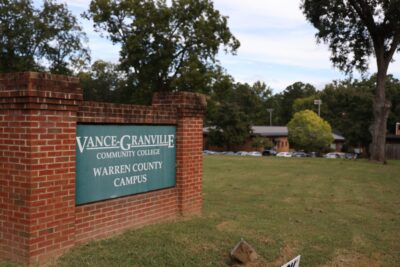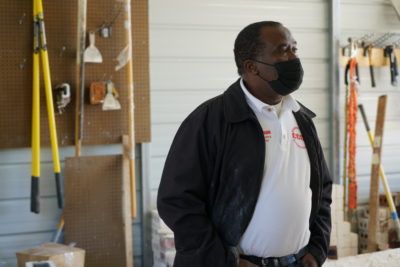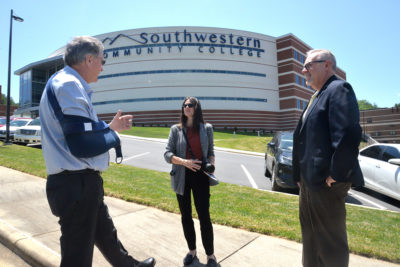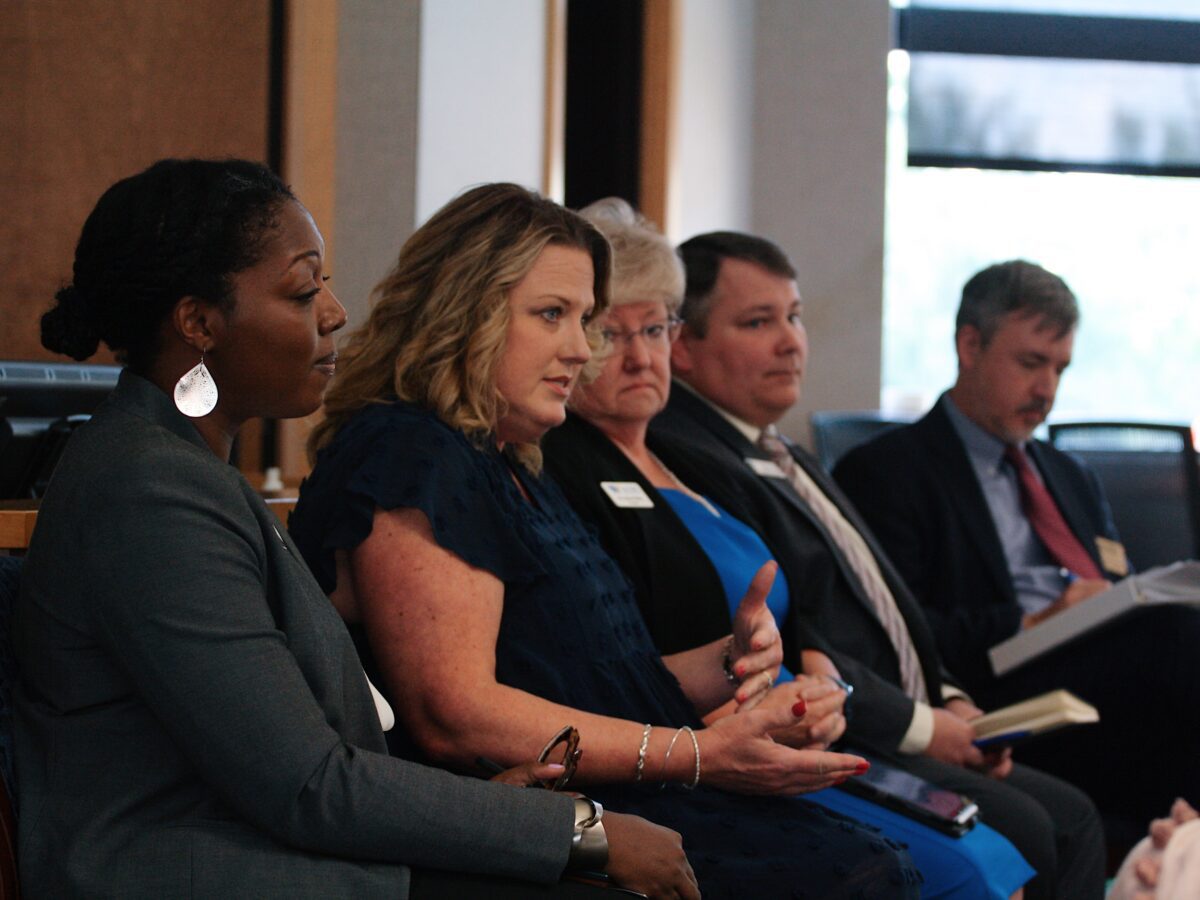

Share this story
- “We will never meet the myfutureNC education attainment goal without our rural colleges,” said Dr. Laura Leatherwood, president of Blue Ridge Community College. @PresLeatherwood @BlueRidgeCC
- "The worst thing we can do in our rural communities is to export our young people. And if we don't meet their needs locally through our community colleges, that's exactly what we'll do.” @mhannunziata
|
|
After serving in the U.S. Army for six years, Patricia Pfeiffer graduated from Wayne Community College in 1988 with an associate degree in nursing.
In 1994, Dr. Patricia “Patty” Pfeiffer began her career at the college as a nursing instructor. In 2021 – and after holding several college leadership roles – she was named interim president of Wayne Community College, officially becoming its ninth executive leader on Jan. 1, 2022.
She believes her story is one of many that showcases the opportunity that community colleges have to change lives, particularly in rural parts of the state like Wayne County.
“And not only do we change our students’ lives, we change generations,” Pfeiffer said. “Because when I became a first-generation student, my husband’s a first-generation student – college didn’t just become a choice for our children. It was going to happen.”
Both Pfeiffer and her husband graduated from Wayne Community College, along with one of her daughters and son-in-law. Her youngest daughter attended a university to play softball, but she also took a class at a community college.
“Because of that, we have had very successful lives,” she said. “And that all started at a community college.”
At the September State Board of Community Colleges retreat, which was hosted at Wayne Community College, Pfeiffer shared her community college story on a panel about rural colleges. The panel was hosted by North Carolina Community College System (NCCCS) Vice President of Strategic Initiatives Patrick Crane and included three other panelists:
- Monica Clark, deputy director for the Belk Center for Community College Leadership and Research
- Dr. Margaret Annunziata, president of Isothermal Community College
- Dr. John Enamait, president of Stanly Community College
The N.C. Rural Center considers 80 of North Carolina’s 100 counties rural. Their analysis uses a density threshold of 250 people per square mile or less to define counties as “rural.”
That means nearly 70% of the state’s community colleges serve at least one rural county – 40 of the 58, according to NCCCS, although they have previously delegated additional colleges as rural when allocating grants to increase broadband access in rural areas across the state.
The number of rural colleges means that the health of our rural colleges is inseparable from the health of the system overall.
“We will never meet the myfutureNC education attainment goal without our rural colleges,” Dr. Laura Leatherwood, president of Blue Ridge Community College, said at the Board retreat.
The panel included discussions about the challenges, successes, and specific needs at rural community colleges. Specifically, the panelists spoke about the need for more resources, building more efficient support systems, and the importance of their colleges in their communities.
“Wayne Community College, as all 58 of us, has an opportunity every day to change a life to get them in the door,” Pfeiffer said. “But then we also have to have the resources available to help them be successful.”
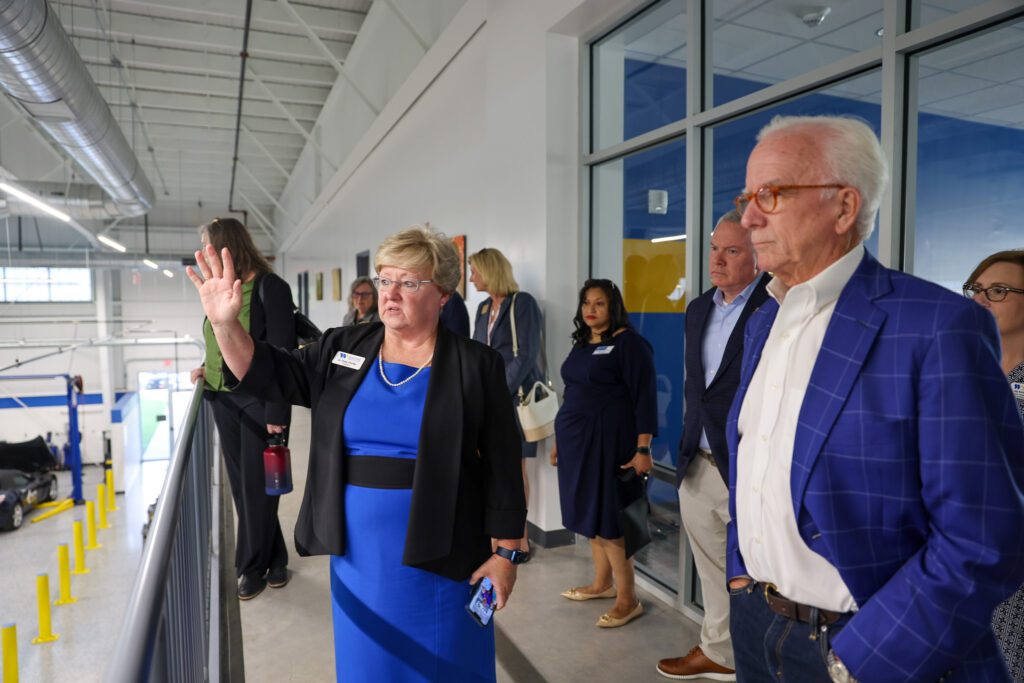

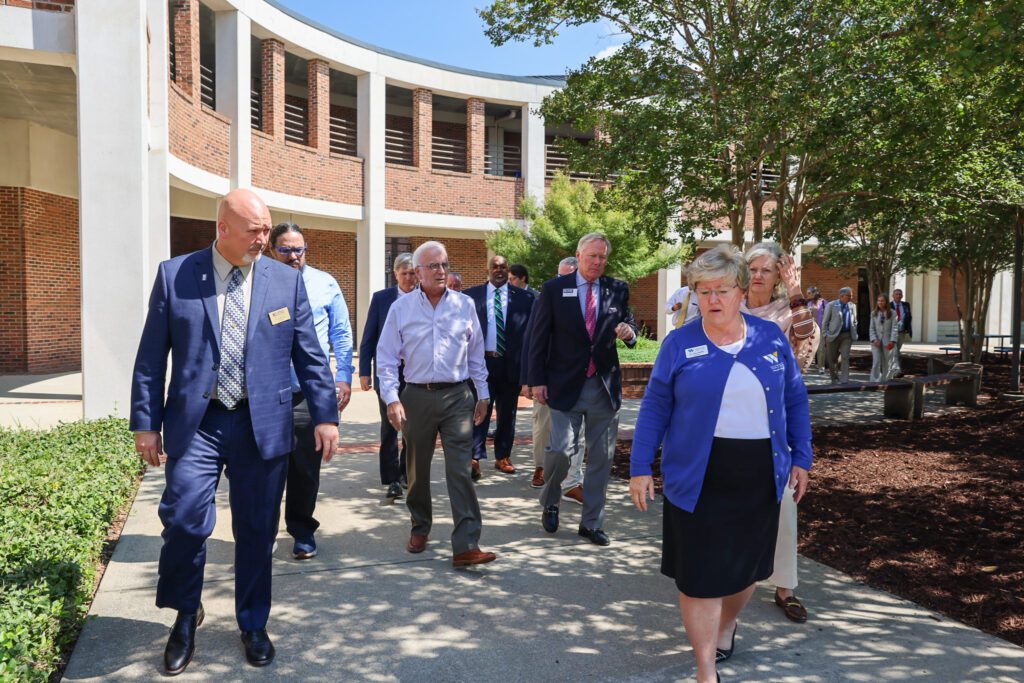

‘The challenges are very real’
Each of the panelists stressed one uniting challenge: the lack of resources.
“As a rural college, I will tell you that there are some significant benefits to being in a rural community,” Annunziata said. “But the challenges are very real and they do look different.”
Approximately 78% of college operating funding came from the state last year, according to NCCCS data, followed by 15% from county funds and 7% from institutional funds.
Generally, state funding goes toward operating costs for instruction, administration, and support services. Local funds largely go toward the operation and maintenance of the campus and construction — and can vary significantly from college to college.
“In the next 5, 10, 20 years, a number of rural counties are going to suffer population decline,” Enamait said. “So what that means is a strained county budget, which affects fiscal planning, which affects the ability to maintain facilities and build new facilities to train the citizens who are left. It comes down to resources.”
The majority of state funding for colleges falls into the instructional category and is distributed using a formula based on full-time equivalent (FTE) student enrollment. One FTE is equivalent to 512 hours of instruction.
For rural colleges, often with smaller student populations, smaller state budgets make it difficult to implement innovative strategies “without a tremendous growth of FTE,” Enamait said.
Stanly Community College, for example, launched a new success coach program a few years ago with the goal of increasing student persistence rates.
“I ended up eliminating another department, having to restructure and free up some financial resources in order to make this happen,” Enamait said.
Such programs are critical for students in rural areas, Pfeiffer said. Approximately 50% of students at Wayne Community College are first-generation students, she said.
The college used a Title III grant to implement an achievement coaching program. As of September, that funding ended. The college was only able to keep three of those achievement coaches.
“I was a first-generation student,” she said. “It takes support to help the students be successful.”
Technology is another need, Pfeiffer said, specifically citing the need for more broadband access. For many colleges, the shift to virtual learning at the start of the pandemic highlighted far-reaching access issues due to affordability and rural areas without reliable internet connections.
Supporting internal capacity to build efficient systems is also a big problem for many colleges, Clark said. Additionally, sometimes collecting the data to start strengthening those systems poses another obstacle.
Identifying partners to build such efficient systems is a challenge, Annunziata said. Specifically, the college needs partners to help overcome generational mindsets “of hopelessness” by providing more jobs that pay living wages.
“The challenge is to look to the future and to engage with community leaders who can really join together, as we are innovative and create new business opportunities or new support opportunities, entrepreneurial opportunities, that allow young people to thrive in the local community,” she said. “Because the worst thing we can do in our rural communities is to export our young people. And if we don’t meet their needs locally through our community colleges, that’s exactly what we’ll do.”
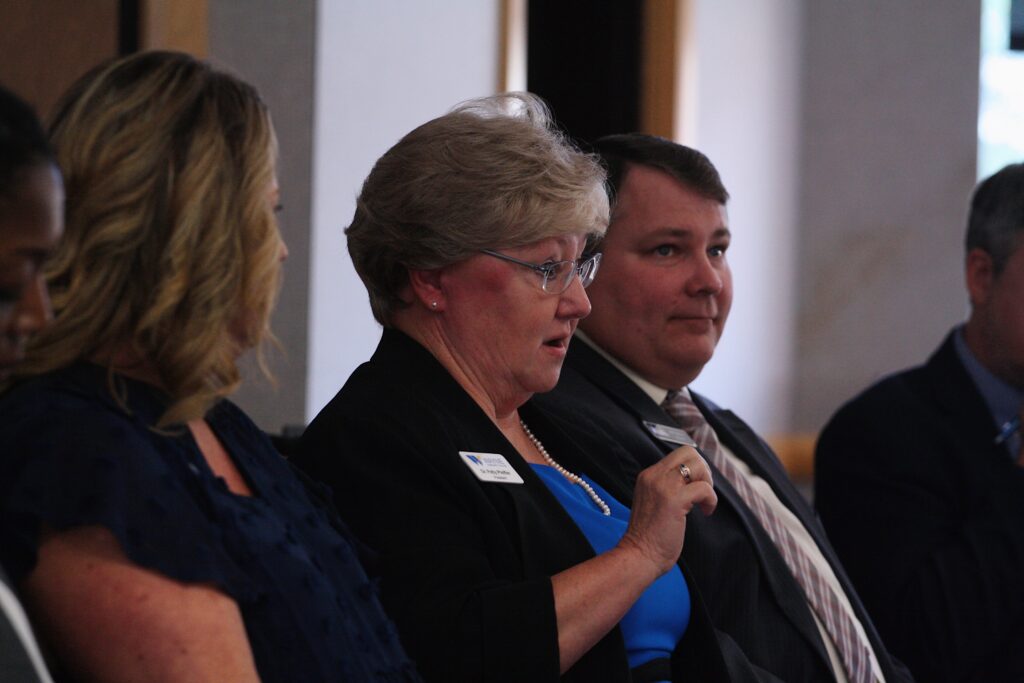

‘Success for us really is the people’
Rural community colleges face a lot of challenges, panelists said, but they also yield a lot of successes.
That success is centered on the college’s students, Enamait said.
Success for us really is the people. It’s the students such as Karina Diaz, who is a single mother working full-time in our machine program trying to make a better life for her and her children. Success is Avery Carrick. You may know Avery, she graduated top of the UNC class for 2023. She graduated from Stanly Community College with an associate in science degree and plans to be a physical therapist. Success also is Nathan Cornett, who is a graduate of Stanly Community College and worked for us as a junior network administrator who accepted a job working at Google, making over $100,000 a year in South Carolina.
Dr. John Enamait, president of Stanly Community College
Relationships with people matter, he said, especially in rural communities. The college has recently made strides in offering wraparound student supports and is also increasing its number of business partnerships and apprenticeships.
Offering student supports has also been a big success at Wayne Community College, Pfeiffer said. The college is now using an early alert system to reach students before they drop out and is working to enhance its resources for specific student groups.
The college is one of four colleges recently awarded $1 million from Anonymous Trust in support of a new, two-year Latino Initiative, “Train the East.” Each community college — Wayne, Lenoir, James Sprunt, and Sampson — will receive $250,000 to be used over the two years.
Wayne Community College now plans to hire a bilingual individual to help recruit and retain students at the college.
“When I looked at the data in the last two years, the second highest dropout rate sometimes is our Hispanic students, and it’s our Hispanic males,” Pfeiffer said. “So if we can get somebody to connect with all Latino students, and help them understand the opportunities of community college… that can give them the opportunity to move into industry and get a job with sustainable wages, that’s what we want to do.”
At Isothermal, Annunziata said the college has adopted three philosophical approaches on how it uses its resources:
- Prioritize resources into areas with long-term impact.
- Understand the lives of their students, and adapt resources to their needs.
- Use resources to partner with business and industry “so that they join with us to offer higher wages and really work with the college to prepare their employees.”
Those approaches have led to the college offering sizable student scholarships, more short-term class offerings, and internships with local and international businesses.
“Thinking about ways that we just engage differently has been really a great opportunity for us to serve our communities,” Annunziata said.
At the Belk Center, Clark said the organization has focused on convening rural community colleges together to share best practices.
“The Rural College Leaders Program has asked for colleges to streamline the various student success initiatives they’re engaged in, and many of them are doing REACH, they’re doing NC Reconnect, they’re doing Avanza — they’re doing all of these things to advance student success,” Clark said. “So we’ve been really thoughtful about hopefully not being too initiative heavy, putting yet another thing on institutions that are resource constrained, but to think about ways that all of these things can engage.”


A need for ‘fierce advocacy’
So what specific resources do rural community colleges need? The panelists had a few ideas:
- Modernizing the system’s funding model to account for the sustainability of rural colleges, including accounting for part-time students.
- Financial incentives for regional collaboration.
- The possibility of a Board reserve fund to allow colleges to access funding when they are trying to start up innovative programs.
- Funding for more success coaches, including counselors who can highlight community college offerings in high schools.
“And it is going to take fierce advocacy,” Pfeiffer said.
Community college leaders and stakeholders must tell the stories of impact across the state in order to make a strong case with legislators. The system must specifically advocate for its value in building a strong workforce, she said.
“If we have fierce advocacy when we put this new funding formula together, and we tell our story, we’ll get it done,” Pfeiffer said. “Because what matters is every student that walks through all 58. We can change a life, one student at a time, one family at a time, the next generation — and that will make not only our communities better, it’s going to make the state better.”
Editor’s note: Dr. Margaret Annunziata serves on EdNC’s Strategic Council.



